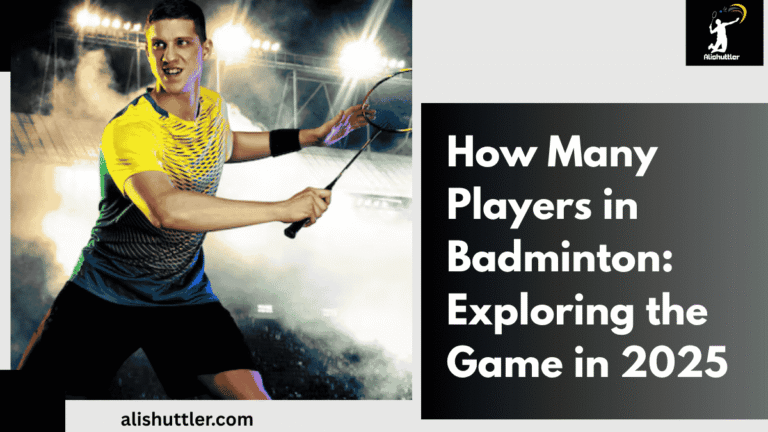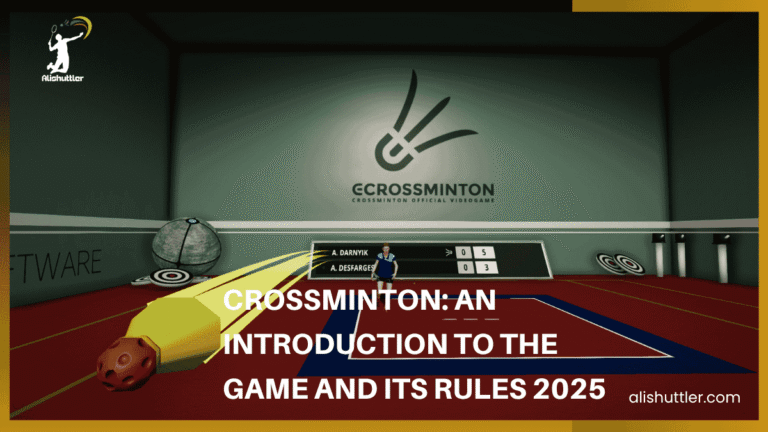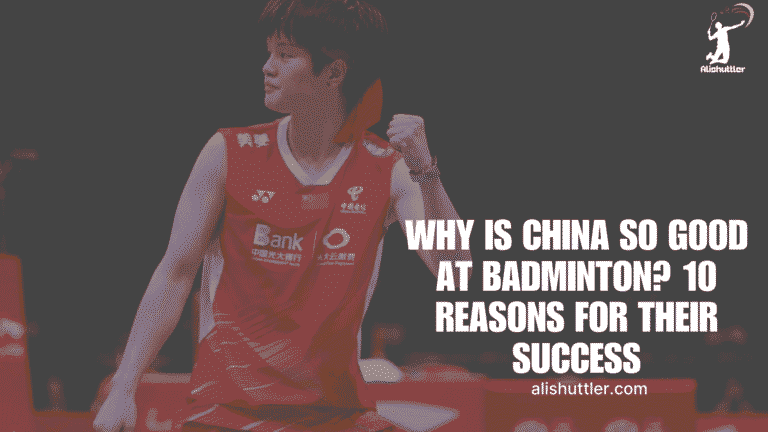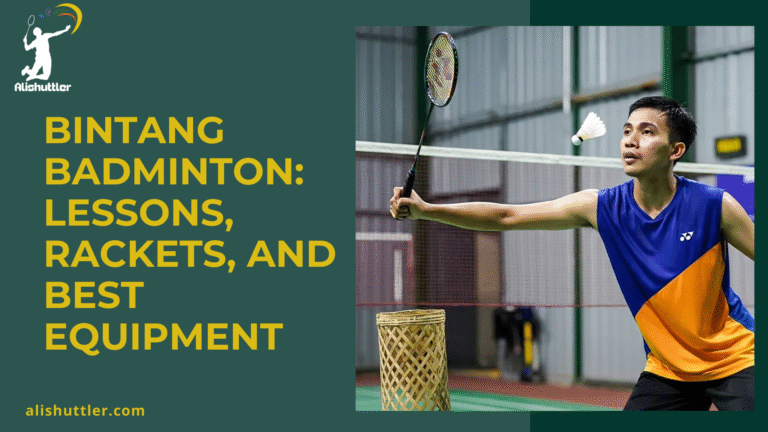Differences between Asian and European Badminton styles, training, and tournament results.
Asian vs European Badminton players play faster with sharp net play and quick footwork. European players typically employ a more tactical style, focusing on rally control and shot variation.
Both continents have created world class players and each style has its strengths. To get a sense of how these differences color the game, the next sections provide additional specifics.
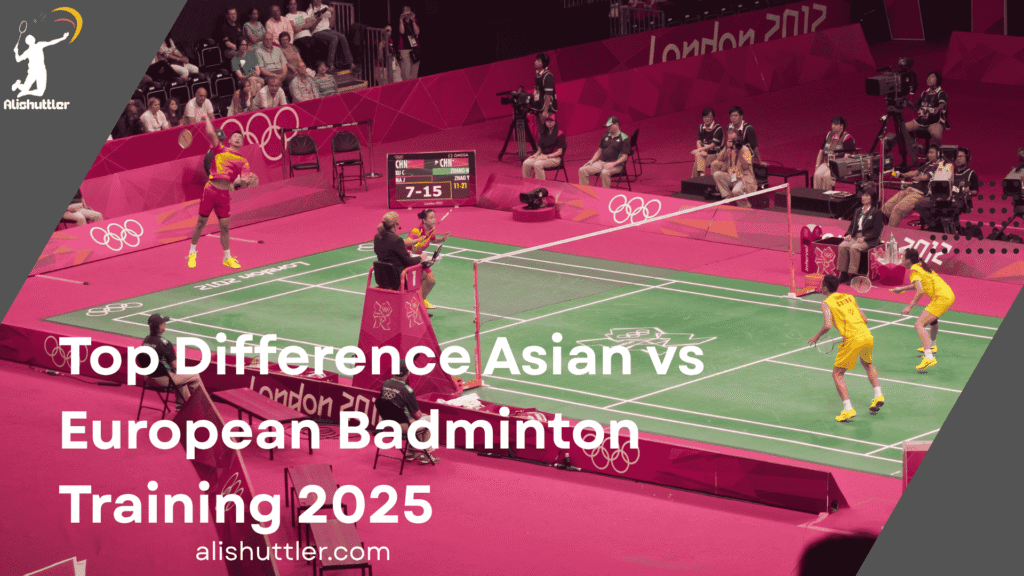
Training Contrasts
Asian and European badminton training methodologies contrast in ways that define each continent’s talented players. These contrasts involve intensity, training frequency, sparring, recovery, and mentality, reflecting local sports culture and broader philosophies on athlete development.
1. Intensity
Asian badminton players train basically 52 weeks of the year. Not many pauses. Youngsters out in China, Indonesia and Japan perhaps train six days a week, piling on long hours each day.
In Europe, training is less intense, with more rest days and shorter sessions. This never-ending intensity develops endurance. Asian players tend to close strong, even in the final set.
These schedules encourage players to manage physical and mental stress more effectively. The grind of hard training, with minimal rest, creates their grit. For young Asian players, this may accelerate their development, but it can endanger burnout if not handled properly.
While European players may escape burnout, they could require more time to get in top shape.
2. Repetition
Repetitive drills are at the core of Asian training. Shadow badminton, multi-shuttle feeding, endless footwork patterns – all of it gets repeated until technique is sharp. Coaches want perfect form, so players repeat every shot hundreds of times.
European training might tend toward mixing up drills, working a bit more on a wider set of match tactics. It’s about constructing flexibility. Asian repetition keeps players steady during pressure rallies.
It results in young players picking up skills quickly, frequently mastering fundamentals earlier. The European approach can assist players in becoming more creative on court.
3. Sparring
Asian teams spar frequently — sometimes on a daily basis — with their sessions intended to simulate real tournament intensity. Games get competitive, even in practice, and we’re under pressure to win.
This forces players to experiment, push their skills, and adjust strategies on the fly. In Europe, sparring could be less frequent and more moderated, more centered on education than on capturing every point.
Asian players become accustomed to hard opponents and match-day jitters from an early age. Sparring constructs tactical awareness and hones the mind for rapid shifts.
For younger players, this can build confidence, enabling them to better endure the pressure of actual matches.
4. Recovery
Asian programs utilize massage, ice baths and stretching to keep players fresh, but rest is still often sparse given their overloaded calendars. European players, meanwhile, might engage in periodization — a deliberate combination of training and rest to prevent burnout.
Good recovery habits avoid injury and sustain long careers. In Europe, more rest can translate to better long-term health, whereas in Asia, the emphasis remains on maintaining match-readiness throughout the year.
Proper recovery is essential to peaking for big tournaments.
5. Mentality
Asian training centers on mental toughness. Athletes are trained to grind through aches and injuries. Coaches frequently employ discipline to construct attention and work ethic.
In Europe, there’s more discussion about mental health, balance, and personal development. For Asian players, mental strength decides tight games.
Their culture emphasizes sacrifice for the team or the country, so this is their mentality. In Europe, backing the complete individual can render players more durable over the long haul.
Playing Styles
Asian and European badminton exhibits distinct playing styles influenced by cultural factors and training methodologies. These contrasts shape how talented players utilize deception, power, pace, and defense in the badminton game.
Deception
Trick shots are a hallmark of Asian badminton, particularly among Chinese and Indonesian players. These players tend to employ wristy, rapid movements to conceal their subsequent action. For instance, Taufik Hidayat and Hendrawan both compelled rivals to lift the shuttle by playing tight at the net, then employed sudden drops or flicks to surprise opponents.
In Europe, deception is less central, although players such as Thomas Kihlstrom demonstrated good technique with slow, twisting shots. Asian training typically consists of wrist control and split-second change drills, whereas European conditioning is more likely to emphasize other strategies.
Deception helps players disrupt opponents, because it becomes more difficult to predict their next shot. This knack can yield cheap points or induce errors, which is why it’s an essential aspect of match play and why certain Asian players are so revered.
Power
Asian players tend to play fast, sharp smashes and aggressive play. Many, such as the Chinese, mix speed and strength to maintain pressure on their adversaries across the entire match. In Europe, power remains important, but there’s frequently a greater emphasis on size and reach.
Danish players, for instance, smash more than the Indonesians. Young athletes in Asia tend to swing with heavy rackets or train with resistance bands to generate explosive power, while Europeans might focus on building up core strength and fitness.
Power defines match strategies. Power hitters can put rallies away quickly, but players who lean on the strength too often can have trouble when fatigued. Rankings, of course, reflect who can combine power with control.
Pace connects to power, as fast play exhausts both players, rendering endurance as crucial as brawn.
Pace
Asian matches are very fast, with players pushing the pace from the very first rally. Singaporean and Chinese players will often shuttle opponents back and forth, wearing them down until errors occur. This rapid tempo requires elite fitness, as strategy and shot precision decline in fatigue.
Practice in Asia is often synonymous with shuttle drills and speed work to prepare players to endure long, swift rallies. European players could emphasize pace control to remain fresh, but have to adjust to speedier styles in world play.
Pace is critical for match management and enabling players to adjust to a diverse array of rivals on the world stage.
Defense
Asian defense, on the other hand, is frequently a matter of fast feet and snappy reactions, allowing players to return shots and extend points. European players might depend more on reach and solid, dead straight returns. Defense matters for matches, because top defenders can often change the course of a long rally, and even a whole tournament.
Asian academies drill quick lunges and court movement, while European training might rely on positioning and timing. Flexibility is key. In crunch time, versatile players who make the leap from defense to offense win.
Systemic Foundations
Badminton’s international ascent is molded by national strategies, grassroots nurturing, and coaching dynasties, particularly in elite badminton development. The training frequency and methodologies differ significantly between Asia and Europe, leading to varied playing styles and success stories on the world stage. Such systemic foundations are crucial for injury prevention and player well-being, as recent research highlights this connection across nations.
National Policies
| Aspect | Asia | Europe |
|---|---|---|
| Policy Effectiveness | Highly centralized, top-down | Decentralized, more autonomy |
| Funding | Large government investment | Mixed public-private funding |
| Grassroots Promotion | State-driven, school-based programs | Club-led, community initiatives |
| Results | High elite output, early specialization | Balanced growth, slower peak |
Asian government policies usually funnel substantial resources into elite training centers. This gives young players access to world-class resources and seasoned coaches. By comparison, European nations might instead look to nearby sports clubs and combined public and private funding.
Asia’s grassroots tends to be school-based, Europe’s are community, club driven. Sports federations are crucial to policy impact. In Asia, organizations such as the Chinese Badminton Association established rigorous national norms. Europe’s federations grant more autonomy to clubs, permitting innovative strategies but occasionally yielding less uniformity.
National policies shape player development and support systems:
- Funding levels decide access to facilities and coaching quality.
- Grassroots programs help find and train young talent.
- Policy effectiveness influences international competitiveness.
- Athletic associations establish injury prevention standards and practices for safe training.
Youth Development
Early specialization in Asian academies is common. They begin concentrated badminton training as early as six or seven, with regimented schedules and intense training volume. This approach can accelerate skill acquisition, but can pose dangers such as burnout or injury if not carefully regulated.
In contrast, youth development in Europe generally implies a different approach. Kids play more than one sport before specializing — boosting overall fitness and minimizing injury risk. A lot of European clubs are interested in building for the future; they’re not just interested in immediate results.
Asian programs utilize talent ID tests, physical screening and national tournaments to identify future stars. Once identified, these players receive high-level coaching and support. A disciplined method maintains elite-level excellence.
A robust youth pipeline, founded on these techniques, is critical to producing champions. Injury prevention is modern youth training, mirroring research on badminton injury profiles and risk factors.
Coaching Hierarchy
Asian badminton academies employ a transparent pecking order, frequently headed by ex-champions or state-licensed trainers. This top-down approach can fuel technical proficiency but may suppress innovation.
In contrast, Europe’s hierarchy is more flexible. Coaches work together more, exchanging concepts across clubs and nations. This can ignite innovation but skimp on the discipline of the Asian systems.
Seasoned coaches, particularly in Asia, can have a massive impact on the development of top players. They bring expertise and best practices. In Europe, coaches will adapt styles to individual players, preferring development.
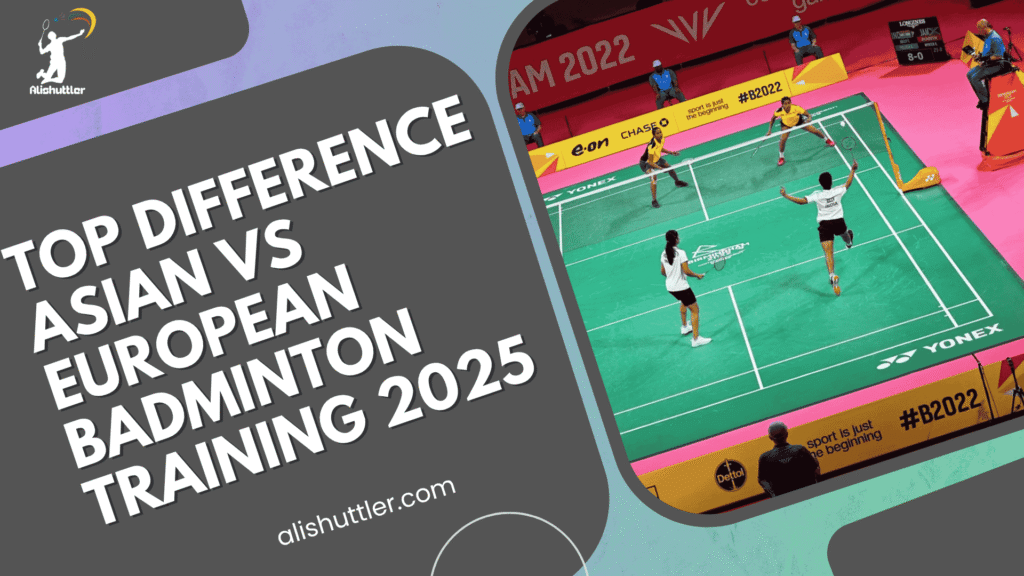
Coaching philosophies differ significantly. Asian systems value repetition and discipline, while European systems push for adaptability and self-learning.
Funding Models
Asian nations frequently rely on state funding and strategic private investment for national-level badminton programs. This enhances access to amenities, transportation, and healthcare.
In Europe, funding depends more on sponsorships, club fees and government grants. This broadens the participation base, although star player financing fluctuates.
Sponsorships and grants determine who is able to train full time and compete internationally. In Asia, big brands and government grants frequently sponsor elite players. Club and regional sponsors could chip in in Europe.
Private investment can lift training standards, but it threatens to create divides between the well-funded and underfunded.
Cultural Impact
Badminton’s cultural history is rich in both Asia and Europe. Its significance varies widely between these regions. Its basic infrastructure and affordability enable everyone to play, in major metropolises or rural communities.
The game had its common origins in India and England, but then evolved into being a critical component of life in much of Asia. For others, it’s a means to get in shape and rendezvous with pals. For some others, it’s a route to patriotism and admiration.
In Europe, badminton remains a developing sport, influenced by distinct customs and lifestyles. Community centers, schools and local clubs provide room for children and adults to play and learn. Several Asian schools supplement gym class with badminton, cultivating a powerful pool of junior talent.
Public parks and open courts draw in new players of all ages. Community events and tournaments both make the sport more fun and raise its profile. Family and friends encourage players to hustle, providing timely encouragement and pride.
Popularity
Badminton is a national sport of countries like China, Indonesia, Malaysia, India, and Korea. Growing up watching great badminton players such as Lin Dan or Tai Tzu Ying inspires many to dream of becoming professional badminton players themselves. Daily games in public parks and schools are common, integrating badminton training into the routine of many individuals.
The media plays a crucial role in promoting blockbuster matches and stars, keeping badminton in the public eye. At family and social gatherings, informal competitions arise, and the sport’s affordability encourages participation across various demographics.
Badminton’s success in Europe has been more gradual. It’s more popular in northern countries like Denmark and the UK, but still nowhere near the level found in Asia. Even with superstars like Spain’s Carolina Marin, media coverage is sparser and interest more niche.
The sport is expanding, driven by improved local badminton clubs and additional tournaments that assist in attracting fresh talent and fostering badminton development.
Player Mindset
Asian players always have stars on their shoulders. Patriotism and legacy drive them to sweat and conquer. Coaches begin with youth, emphasizing discipline, skill and teamwork.
To lose is not merely to lose for yourself, it is to lose for the entire tribe. It’s pressure that breeds a competitive spirit and mental toughness — both considered the keys to success.
European players, although committed, can feel less burden from their culture. They emphasize instead personal development and equilibrium. The road to the summit can be more leisurely and a matter of individual preference than collective nationalism.
Yet, while the infrastructure may not measure up to Asia, you can’t discount top European players’ strong will and skill.
Social Pressure
Asian players, meanwhile, face both social and family pressure. Victory brings pride not only upon them but their parents, their schools, their towns. Training is intense, leaving little time for anything aside from the sport.
Family and community support can be powerful, but so can the drive to triumph. European players are under less pressure to win at all costs. There is community support, but the bar is lower. A lot of people play for fun or fitness, not for trophies.
The Genetic Myth
This tendency to fall into the trap of genetic difference reasoning as to why Asian or European players are good at badminton is widespread. It doesn’t fit the reality. It turns out that sports genius is a product of culture, training, and environment far more than it is genetic luck. Research challenges this assumption, the belief that a particular race or ethnic group is genetically predisposed to be better at badminton.
Rather, athleticism sprouts from availability of resources, early exposure to sport, and long-term commitment.
Physique
Asian badmintonists are, as we are all aware, smaller and lighter than their European counterparts. Still, this doesn’t prevent them from thriving. Instead, their size can aid in speed, quick feet, and agility — all of which are crucial characteristics in badminton.
European players, by contrast, might be lankier, built for smashes and net reach. Players training in a certain manner significantly affects their body and their game. Asian trainings often emphasize endurance, agility and quickness.
This carves a lean physique and develops explosive power. In Asian vs European Badminton, some players emphasize strength and conditioning, which can foster a more muscular physique, but not necessarily an edge. Body type doesn’t determine victors. Instead, how a player utilizes his body counts more.
Some players utilized their reach for smashes, others depended on agility for defense. What connects elite players is not their physique, but how athletic and trained they are.
Environment
In Asian vs European Badminton, a lot of countries have sports schools and state-run training centers. They have top coaching, top equipment and frequent matches. Young players have the opportunity to practice with the best starting early.
The availability of good courts and good coaches and good competition forms future champions. In much of Europe, training is costly and more difficult to locate. Certain athletes can’t seem to catch the support they require to reach the top.
Cultural attitudes count, as well. Asian vs European Badminton is a national pride in Asia. A lot of families view it as the road to riches, instilling a ruthlessness in kids to fight and fall down. This support creates a community around the sport.
Europe meets other limits. Fewer clubs, less funding and less emphasis on badminton, and even gifted players may not receive the same opportunity to excel.
Opportunity Asian vs European Badminton
In Asia, youth players can enroll with local clubs, sports schools, and national camps. This path, of course, is well-lit. Big tournaments and leagues provide youth players the opportunity to go up against elite players at an early age.
This develops ability and self-assurance, allowing them to advance the ladder quickly. International affairs are crucial. Asian players would go abroad, gain new skills, face new styles.
This global exposure hones their craft. Not all Asian vs European Badminton countries provide the same support. There are countries that have excellent programs, but there are many that don’t, which makes it difficult for players to be scouted or advanced.
Future Convergence
As badminton continues its global expansion, the stylistic boundaries between Asian and European training methodologies may begin to fade. More nations seek innovative training abroad, particularly in badminton development. Asian systems used to be notable for rigid group drills and high intensity, while Asian vs European Badminton programs focused on long-term planning and skill development. Now, both sides may be taking the best ideas from one another to enhance their training efficiency.
For instance, certain European badminton teams have long adopted Asian-style drills to develop speed and reflexes among their talented players. Simultaneously, Asian teams experiment with European approaches that emphasize developing players’ careers, not merely focusing on wins in the short-term. This balanced training approach is essential for nurturing future professional Asian vs European Badminton players.
Cross-cultural exchanges are crucial to this transition. Coaches and players journey more these days, swapping tips and training tactics. You have European coaches in Asia, and Asian coaches in Europe. These moves provide both regions fresh perspectives toward the sport, enriching the badminton scene globally.
Training camps, joint clinics, and international youth events help accelerate the melting pot of styles. Young athletes pick up footwork drills from one side and mental strategies from the other. This ping-pong of ideas could help make Asian vs European Badminton training more complete everywhere, fostering the development of competitive athletes.
Tech is a big player. Asian vs European Badminton squads utilize more data, video, and sports science to map out training. Wearable sensors measure players’ speed. Slow-mo video decompresses every shot. These tools assist coaches in locating vulnerabilities and establishing personalized drills.
European countries, with their research and sports science push, help lead this trend in badminton training. Asian teams, ever in search of an advantage, embrace these tools as well. It’s no longer about group routines but instead about plans constructed around each player’s individual needs, significantly impacting their performance in badminton competitions.
As tech becomes less expensive, more Asian vs European Badminton clubs around the globe can adopt it, not just the elite teams. The emergence of pro leagues in Europe complicates things even further. As badminton expands in countries such as Denmark, France, and Germany, local stars receive better training and exposure to more matches, enhancing their skills on the international stage.
They encounter top Asian players more frequently, which allows them to study and adjust their tactics. Others believe this will shrink the capability divide in the badminton world rankings. However, there remain huge cultural and social divides, with group values in Asia and personal development influencing how children learn the game.
Maybe these deep-rooted traditions would leave some differences alive. In the end, the future is set to be a mix. Coaches and players will intersperse quick group drills with focused attention on individual players. The top squads will employ established techniques as well as emerging high-tech methods to enhance their training efficacy.

Asian nations will continue to be powerful, but more Asian vs European Badminton players could emerge.
Final Thoughts on Asian vs European Badminton
Asian vs European Badminton differ in significant ways in the manner in which players train, position themselves, and conceptualize the game. Asian players often begin their careers at a young age, emphasizing quickness and control. European players rely on powerful physiques and intelligent gameplay. Both sides employ systems that suit themselves. Culture influences player behavior both on and off the court.
The notion genetics determine prowess does not stand. New trends have both sides swapping tips and styles. So the game develops and gets more diverse. To stay on top, watch competitions from both locations or attend a neighborhood club to experience these techniques in person. Remain receptive to innovative moves and continue to learn from the elite everywhere.
Frequently Asked Questions
What are the main training differences between Asian vs European Badminton players?
Asian training focuses on speed, agility, and drills, emphasizing technical skills and repetition. While both Asian and European badminton training strive for excellence, their training methods and approaches can vary significantly.
How do playing styles differ between Asian vs European Badminton athletes?
Asian players are renowned for lightning-fast rallies and quick reflexes, while the European badminton training emphasizes strategy, height, and power. Both styles contribute to the success of talented badminton players and top champions across the world.
What systemic foundations support badminton in Asia and Europe?
Asian countries generally have very good youth programs and state support, while European badminton training relies on club systems and private coaching, influencing talented players’ development and national team strategies.
Does culture influence performance Asian vs European Badminton?
Indeed, cultural values affect drive, comradeship, and training rigor in badminton training. In Asia, respect for coaches and tough practice are the norm for talented athletes, while European cultures emphasize individual creativity and flexibility.
Is genetics a major factor in badminton success?
No, it’s not genetics. Practice, surroundings, and individual commitment play a crucial role in skill development. Top athletes come from various backgrounds, demonstrating that talent is cultivated, not passed down.
Are Asian vs European Badminton styles becoming more similar?
Yes, global competition is causing style homogenization in badminton training. Talented players today utilize a combination of speed, power, and tactics, regardless of their geographical origins, as coaches and players learn from each other around the world.
Can beginners benefit from understanding these differences?
Indeed, understanding these differences assists novice athletes in selecting training strategies that align with their objectives, fostering a deeper understanding of the badminton game’s variety and supporting holistic skill development.
